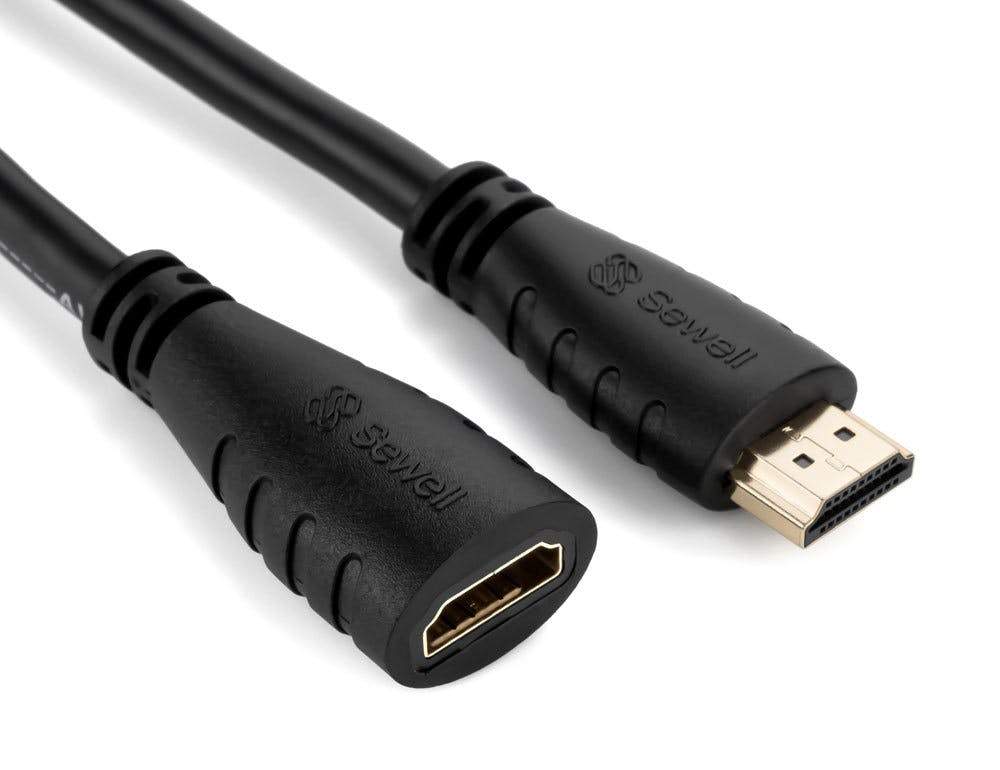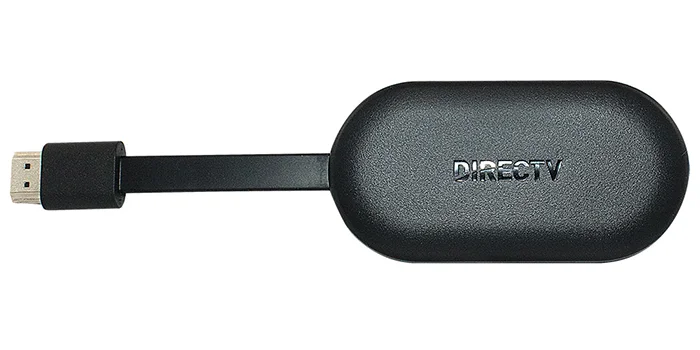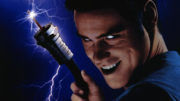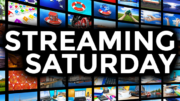Those little dongles from the major media companies sure are convenient. They plug into your TV’s HDMI port and sit there completely invisible. While it would be even better if they got power from that port too, don’t blame them… the HDMI standard on most TVs doesn’t support this. It will probably be about 5 years before you see something like that on the majority of TVs.
A lot to like about these little devices
With one of these devices like the DIRECTV Gemini Air, Sling/DISH AirTV Mini, it’s easy to upgrade an older TV to watch practically any app you want. Most of them work with some variant of the Android TV operating system so any app in the Google Play store will work. The Amazon Fire stick and Roku Streaming Stick each have their own very robust app store too.
The big advantage of these devices is their size, which isn’t big at all. They’re all about the size of a box of Tic Tacs, perfect for hiding behind a TV. Depending on the one you get, you can get a very fancy remote that resembles your old cable box or something so simple you’ll never forget what each button does.
The one problem you may encounter
With a device this small it’s impossible to have a truly wired connection. You’re relying on Wi-Fi to get the job done. While that’s usually not a problem, you may find that the signal is too weak to stream the programs you want. You may see messages about poor performance or buffering depending on what device you have, even if you have good Wi-Fi in the room where the TV is.
This happens because Wi-Fi signals have a very hard time passing through your TV’s screen. There’s generally a metal barrier between the screen and the rest of the TV. It’s there to specifically stop stray signals from passing through. Without it, the screen itself could be affected by the electronics that make the TV run. The barrier works two ways, though. Even though it’s designed to block signals from the back of the TV from reaching the front, it also works the other way. It can block Wi-Fi signals from reaching the back of the TV.
How to solve this problem

The easiest way to solve this problem is to get that device out from behind the TV and put it somewhere that the Wi-Fi signal can reach. You’ll need an HDMI extension cable like this one from Solid Signal. You plug one end into the TV. The other end goes into your streaming device. This gives you a range of 15 feet where you can put the streaming device. Hopefully that will be enough to get it into good Wi-Fi range. It’s true that you’ll lose the benefit of hiding the thing behind the TV. But, that’s a small price to pay in order to be able to use it at all.
Won’t this hurt remote performance?
In general, no. Most of these devices use Bluetooth to communicate between the remote and the device. Bluetooth works better because its signals can get around the shielding on the TV a little better. When you take the device out from behind the TV, there’s a chance it could actually work better. This is true even if the device is further away from you. Bluetooth has a range of 30-50 feet if there’s nothing blocking it so this might just end up giving you a better experience.
What if this doesn’t solve the problem?
This isn’t going to solve the problem of the device being in a room with no Wi-Fi at all. Unfortunately a lot of routers aren’t strong enough to cover even a modest size house. That’s why people buy Wi-Fi repeaters, access points, and mesh networking systems. There’s a great selection of Wi-Fi products at Solid Signal that can help with this issue. These are pro-quality devices that will work great for you if you’re willing to put in the time installing. You’ll also find simple range extenders that can add Wi-Fi to an area if there isn’t any.
Having better Wi-Fi in the room where you’re watching TV will also let your other devices work better. Because, honestly, you play with your phone while you’re watching anyway.
If you’d like to know more about Wi-Fi solutions, call the experts at Solid Signal. We’re here for you during East Coast business hours. The number is 888-233-7563. If it’s after hours, no problem! Fill out the form below and we’ll get right back to you.





